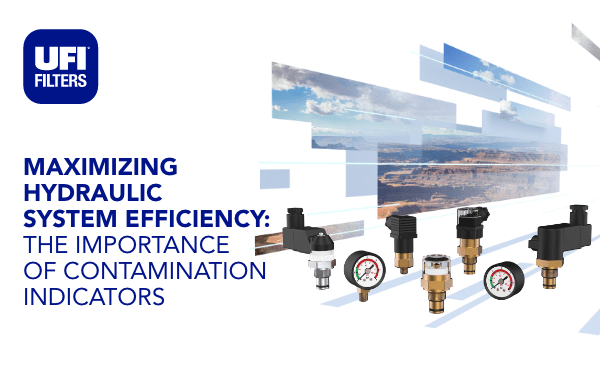
Clogging indicators play a vital role in hydraulic systems, actively helping to maintain fluid quality and extend the life of critical system components.
In this month’s blog, we will dig deeper into the function of these hydraulic filter accessories.
Next month we will look at the types of contamination indicators available for different applications.
What is the function of a clogging indicator?
Clogging indicators are devices designed to monitor the pressure differential across a hydraulic filter.
This parameter provides a direct indication of the clogging status of the filter, allowing operators and technicians to optimize system maintenance scheduling or identify the need for preventive maintenance in time to avoid damage to system components.
The main functions of clogging indicators are
- Failure prevention, as the presence of contaminants in the oil can lead to the malfunction of hydraulic system components such as pumps, valves, and cylinders.
- Prolonging component life, as continuous monitoring of the condition of the filter allows maintenance to be planned efficiently, improving performance and extending the life of the filter and system components.
- Reducing maintenance costs, as the use of contamination indicators allows proactive management of the system, reducing the costs associated with sudden failures and unplanned downtime.
How do clogging indicators work?
During normal operation of the system, the pressure drop across the filter gradually increases due to the accumulation of contaminants retained by the filter element.
Therefore, it is essential to replace the filter element when it becomes clogged, before the pressure drop reaches the bypass valve set point.
For this reason, we always recommend the use of a clogging indicator set to trip at a pressure drop value lower than the bypass valve set point.
This will give an accurate indication of the optimal time to replace the filter element.
The type of indicator required depends on the specific application of the filter:
- For return-line and low-pressure filters, the clogging indicator measures the pressure upstream of the filter;
- For high-pressure filters and some return filters, a differential clogging indicator can be appropriate; this measures the pressure upstream and downstream of the filter and activates a signal when the differential pressure reaches a preset value;
- For suction filters, the clogging indicator measures the vacuum downstream of the filter.
It is, therefore, always advisable to fit filters with the most suitable indicator for the specific application.
In conclusion, the use of clogging indicators is a simple and effective way to improve the efficiency, safety, and durability of hydraulic systems.
UFI Filters Hydraulics offers a wide range of clogging indicators to meet different customer needs.
To identify the most suitable clogging indicator for your specific application, visit our website or contact our sales team.